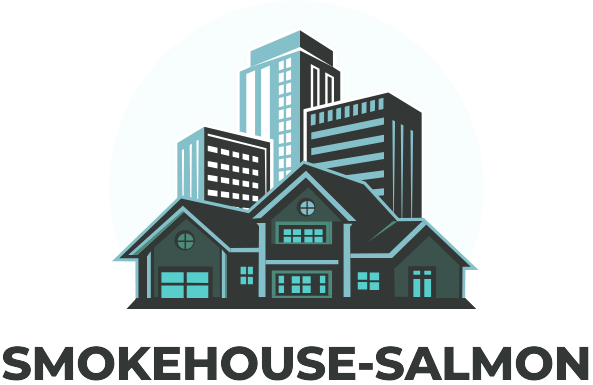When the housing market goes wild, it’s not just the prices that get inflated—so do expectations, dreams, and the occasional ego. A housing bubble can turn the serene act of buying a home into a rollercoaster ride filled with dizzying highs and gut-wrenching lows. One minute, everyone’s a real estate mogul, and the next, they’re left wondering why their investment looks more like a sinking ship than a castle.
Table of Contents
ToggleOverview of Housing Bubbles
A housing bubble occurs when property prices escalate rapidly due to high demand and speculation. During these periods, buyers often exhibit irrational behavior, driven by the belief that home values will continue to rise indefinitely. The surge in prices creates an illusion, leading many to invest heavily in real estate.
As prices inflate, expectations shift. Homebuyers begin to anticipate substantial returns on their investments, altering their financial decisions. The increased purchasing power also attracts investors and speculators seeking quick profits.
Indicators of a housing bubble often include exorbitant price-to-income ratios and sharp increases in mortgage approvals. Data shows that during the peak of a bubble, home prices can exceed fundamental values by as much as 30 percent.
The aftermath of a housing bubble can be severe. Upon realization that the market cannot sustain inflated prices, a correction occurs, leading to sudden declines in property values. Many homeowners find themselves underwater, owing more on their mortgages than their homes are worth. This scenario can trigger widespread foreclosures and economic instability, as seen during the 2008 financial crisis.
Awareness of these dynamics serves as a crucial tool for potential buyers and investors. An informed approach can mitigate the risks associated with the unpredictable nature of housing markets.
Causes of Housing Bubbles
Housing bubbles arise from various interconnected factors that drive demand and influence market behavior. Understanding these causes unveils the complexities of the housing market.
Economic Factors
Economic factors play a significant role in housing bubble formation. Low interest rates lead to increased borrowing capacity, enabling more buyers to enter the market. Rapid income growth also contributes by increasing purchasing power, allowing individuals to afford higher-priced homes. Market speculation amplifies these effects, as investors purchase properties under the assumption that prices will continue to rise. Additionally, limited housing supply exacerbates demand, driving prices upward. Data indicates that price-to-income ratios often exceed historical averages by more than 30 percent during bubble periods, highlighting the disparity between incomes and home values.
Psychological Factors
Psychological factors significantly influence buyer behavior in the housing market. FOMO, or fear of missing out, drives potential buyers to rush into purchasing decisions. As their peers experience rising property values, individuals might feel pressured to invest before prices climb even higher. Overconfidence also surfaces when buyers become convinced of perpetual price appreciation, leading to risky financial choices. Groupthink can emerge in real estate communities, where individuals adopt common beliefs about market trends without critical analysis. These psychological dynamics often fuel irrational behaviors that contribute to the unsustainable price increases seen in housing bubbles.
Effects of Housing Bubbles
Housing bubbles create significant impacts on multiple fronts. These effects resonate through homeowners, investors, and the economy as a whole.
On Homeowners
Homeowners experience considerable stress during housing bubbles, as housing prices inflate rapidly. Many feel pressure to purchase quickly, fearing potential losses if they delay. Rising expectations may lead them to overextend financially, often resulting in mortgages that exceed their means. When the bubble bursts, homeowners frequently find themselves underwater, owing more than their homes are worth. This situation can lead to foreclosures, financial ruin, and emotional challenges. The 2008 crisis illustrated how quickly enthusiasm can turn into despair for many homeowners.
On Investors
Investors often become overly optimistic during housing bubbles, expecting relentless home value increases. Speculation drives them to make investments based on trends rather than fundamentals, increasing their risk exposure. Many investors taper their focus on long-term strategies, prioritizing quick returns instead. As prices start to decline, some investors face substantial losses and may struggle to sell properties. The fear of missing out leads to irrational decision-making, making the eventual corrections even more painful. Investors who understand market dynamics tend to fare better in turbulent environments.
On the Economy
Economic consequences of housing bubbles can be profound and long-lasting. When prices inflate beyond fundamentals, this creates instability in the housing market and broader economy. Consumer spending often correlates with home equity, so when property values drop, spending can decline sharply. Banks may tighten lending standards in response to increasing defaults, leading to reduced access to credit for consumers and businesses. Furthermore, a downturn in the housing market can stifle economic growth, triggering widespread layoffs and reductions in consumer confidence. Understanding these economic ties helps stakeholders navigate the complexities of housing markets.
Case Studies of Housing Bubbles
This section examines specific case studies of housing bubbles, with a focus on the 2008 financial crisis and notable historical bubbles.
The 2008 Financial Crisis
The 2008 financial crisis serves as a significant example of the devastation a housing bubble can cause. Home prices peaked in mid-2006, significantly exceeding fundamental values by over 30 percent. Speculative buying driven by easy mortgage approvals fueled demand, resulting in an inflated market. When prices began to decline, foreclosures skyrocketed, leaving many homeowners underwater on their mortgages. The crisis led to the collapse of major financial institutions, substantial unemployment increases, and a lengthy recession. The interconnected nature of the housing market and broader economy highlights how quickly instability can emerge from inflated home prices.
Other Notable Bubbles
Various other notable housing bubbles demonstrate similar patterns of inflation and subsequent collapse. Japan’s bubble in the late 1980s saw property values soar amid rampant speculation, only to plummet in the early 1990s, leading to a prolonged economic stagnation. In 2007, the Spanish housing market experienced rapid price growth, with values surging by approximately 50 percent over a few years. A subsequent crash led to thousands of unfinished homes and significant financial losses. These cases showcase the repetitive cycle of speculation, inflated prices, and eventual market corrections, reinforcing the importance of careful analysis in real estate investments.
Mitigation Strategies
Implementing effective mitigation strategies can help reduce the risk of housing bubble effects. Monitoring economic indicators such as price-to-income ratios provides insight into potential market distortions. Adjusting lending standards, particularly during periods of rapid price growth, strengthens the overall market stability.
Encouraging education and awareness among potential homebuyers fosters informed decision-making. Providing access to accurate data helps individuals understand market conditions and avoid impulsive purchases. Strengthening regulations on lending practices minimizes the potential for irrational behavior driven by speculation.
Diversifying investment strategies can further mitigate risks. Investors should consider alternative investment avenues beyond real estate to reduce overexposure to the housing market. Adopting a long-term perspective often yields more sustainable investment outcomes compared to a focus on quick returns.
Local governments can also take proactive measures. Increasing affordable housing development and improving infrastructure enhances supply without inflating demand excessively. Collaborating with financial institutions to offer transparent mortgage products supports responsible borrowing.
Participating in community outreach programs supports education around property ownership. Communities that promote financial literacy equip individuals with the knowledge to assess risks effectively. Engaging in open dialogues about market trends aids in creating a more resilient housing environment.
Adopting these strategies collectively strengthens the housing market against potential bubbles. Implementing comprehensive policies ensures a balanced approach, benefiting homeowners, investors, and the economy as a whole.
Conclusion
The effects of a housing bubble extend far beyond inflated prices. Homeowners and investors alike face significant risks when market conditions shift unexpectedly. Emotional stress and financial strain can overwhelm those caught in the cycle of speculation and unrealistic expectations.
Understanding the dynamics of housing markets is essential for making informed decisions. By recognizing indicators of a bubble and employing mitigation strategies, individuals can better navigate the complexities of real estate investments.
Ultimately, fostering financial literacy and promoting responsible lending practices will contribute to a more stable housing market, reducing the likelihood of future crises. The lessons learned from past bubbles serve as a reminder of the importance of vigilance in an ever-changing economic landscape.





